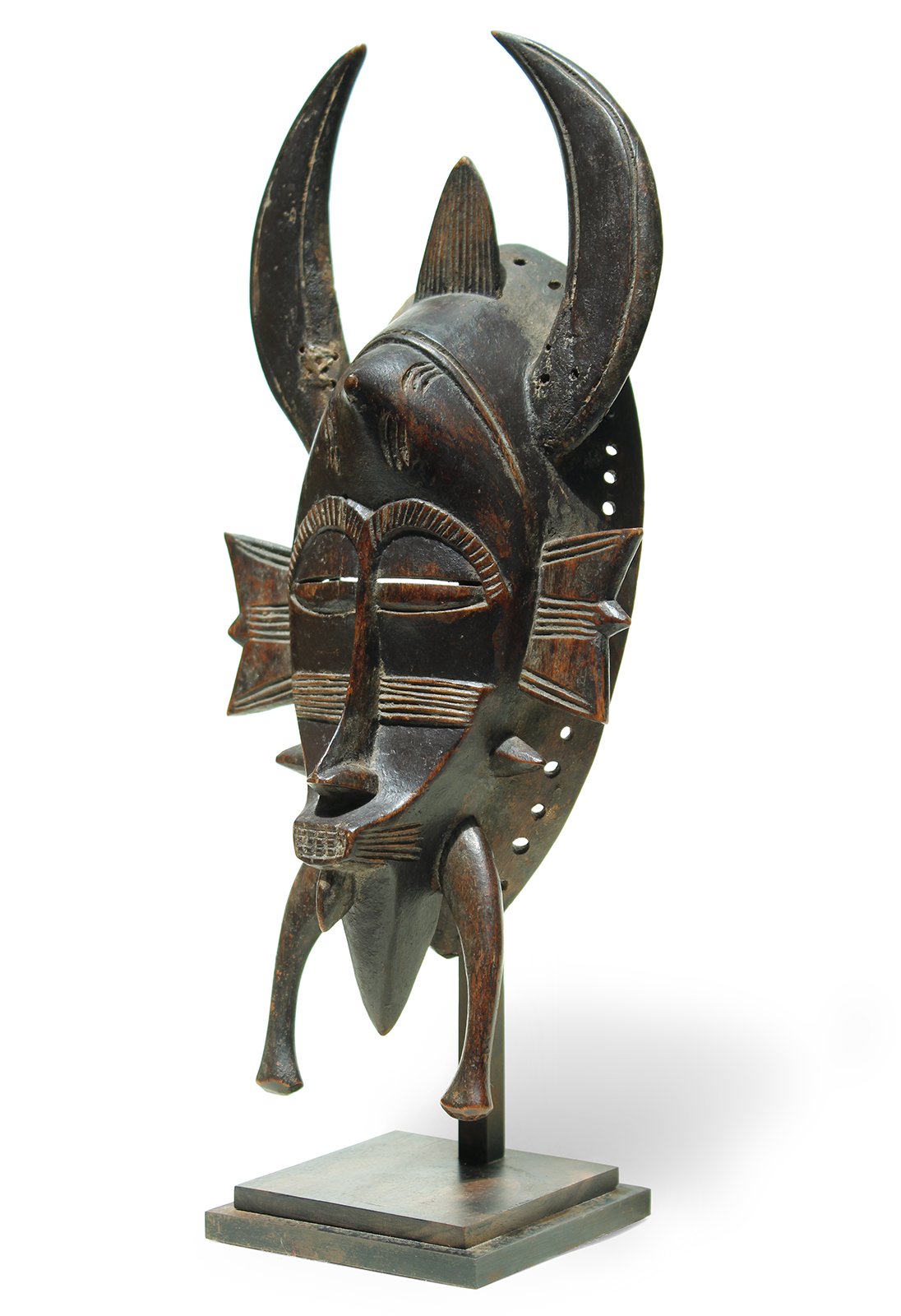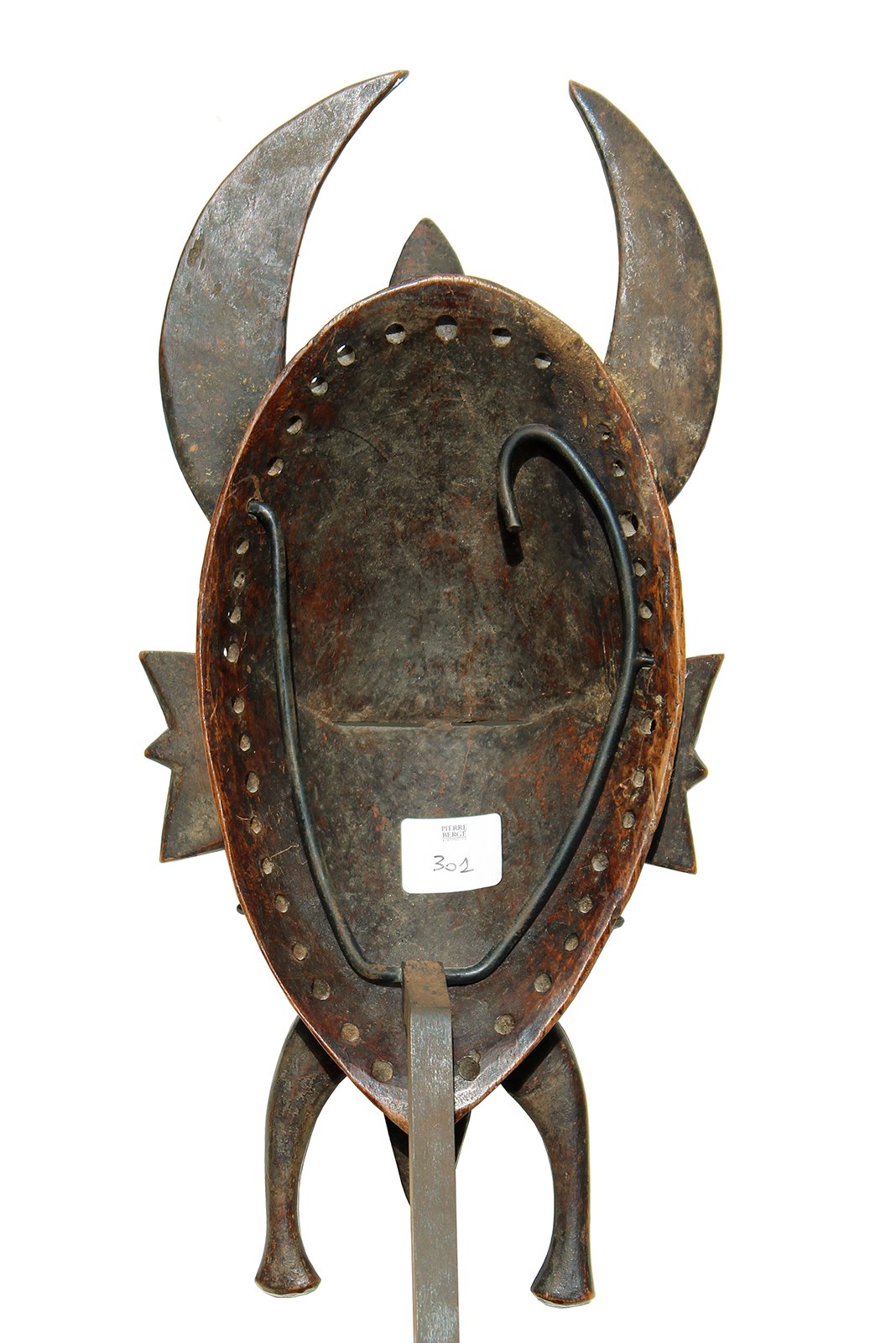Senufo Kpelie mask
Senufo people
Ivory Coast
Mid XX century
H. 30 cm
The Senufo people and reside primarily in Ivory Coast, with some also living in Burkina Faso and Mali. The kpelie mask is used by men’s societies for the initiation of boys into adulthood, in funerals of important villagers, and in harvest festivals celebrating and giving thanks to the gods for a bountiful harvest.
The kpelie is always worn by men, but it combines the features of an ideal woman and an animal, such as an antelope, ram, or hornbill, along with fertility symbols, such as palm nuts. The scarification marks represent the Senufo ideal of female beauty. The two appendages that always extend downward from the mask represent symbolic legs that tether the spirit to the earth. The figure on the head, whether it is an animal, ancestor, or symbol, depend on the caste group to which ancestor represented by the mask belonged. The hornbill, for example, is linked to metal smiths.
The masquerader will dance to traditional music and singing while holding an iron staff or a horsetail whisk and wearing a robe composed of knotted diamonds (the shape believed symbolic of the cycle of life) and a long raffia fiber collar and cuffs to disguise the hands.
Senufo people
Ivory Coast
Mid XX century
H. 30 cm
The Senufo people and reside primarily in Ivory Coast, with some also living in Burkina Faso and Mali. The kpelie mask is used by men’s societies for the initiation of boys into adulthood, in funerals of important villagers, and in harvest festivals celebrating and giving thanks to the gods for a bountiful harvest.
The kpelie is always worn by men, but it combines the features of an ideal woman and an animal, such as an antelope, ram, or hornbill, along with fertility symbols, such as palm nuts. The scarification marks represent the Senufo ideal of female beauty. The two appendages that always extend downward from the mask represent symbolic legs that tether the spirit to the earth. The figure on the head, whether it is an animal, ancestor, or symbol, depend on the caste group to which ancestor represented by the mask belonged. The hornbill, for example, is linked to metal smiths.
The masquerader will dance to traditional music and singing while holding an iron staff or a horsetail whisk and wearing a robe composed of knotted diamonds (the shape believed symbolic of the cycle of life) and a long raffia fiber collar and cuffs to disguise the hands.
Senufo people
Ivory Coast
Mid XX century
H. 30 cm
The Senufo people and reside primarily in Ivory Coast, with some also living in Burkina Faso and Mali. The kpelie mask is used by men’s societies for the initiation of boys into adulthood, in funerals of important villagers, and in harvest festivals celebrating and giving thanks to the gods for a bountiful harvest.
The kpelie is always worn by men, but it combines the features of an ideal woman and an animal, such as an antelope, ram, or hornbill, along with fertility symbols, such as palm nuts. The scarification marks represent the Senufo ideal of female beauty. The two appendages that always extend downward from the mask represent symbolic legs that tether the spirit to the earth. The figure on the head, whether it is an animal, ancestor, or symbol, depend on the caste group to which ancestor represented by the mask belonged. The hornbill, for example, is linked to metal smiths.
The masquerader will dance to traditional music and singing while holding an iron staff or a horsetail whisk and wearing a robe composed of knotted diamonds (the shape believed symbolic of the cycle of life) and a long raffia fiber collar and cuffs to disguise the hands.




